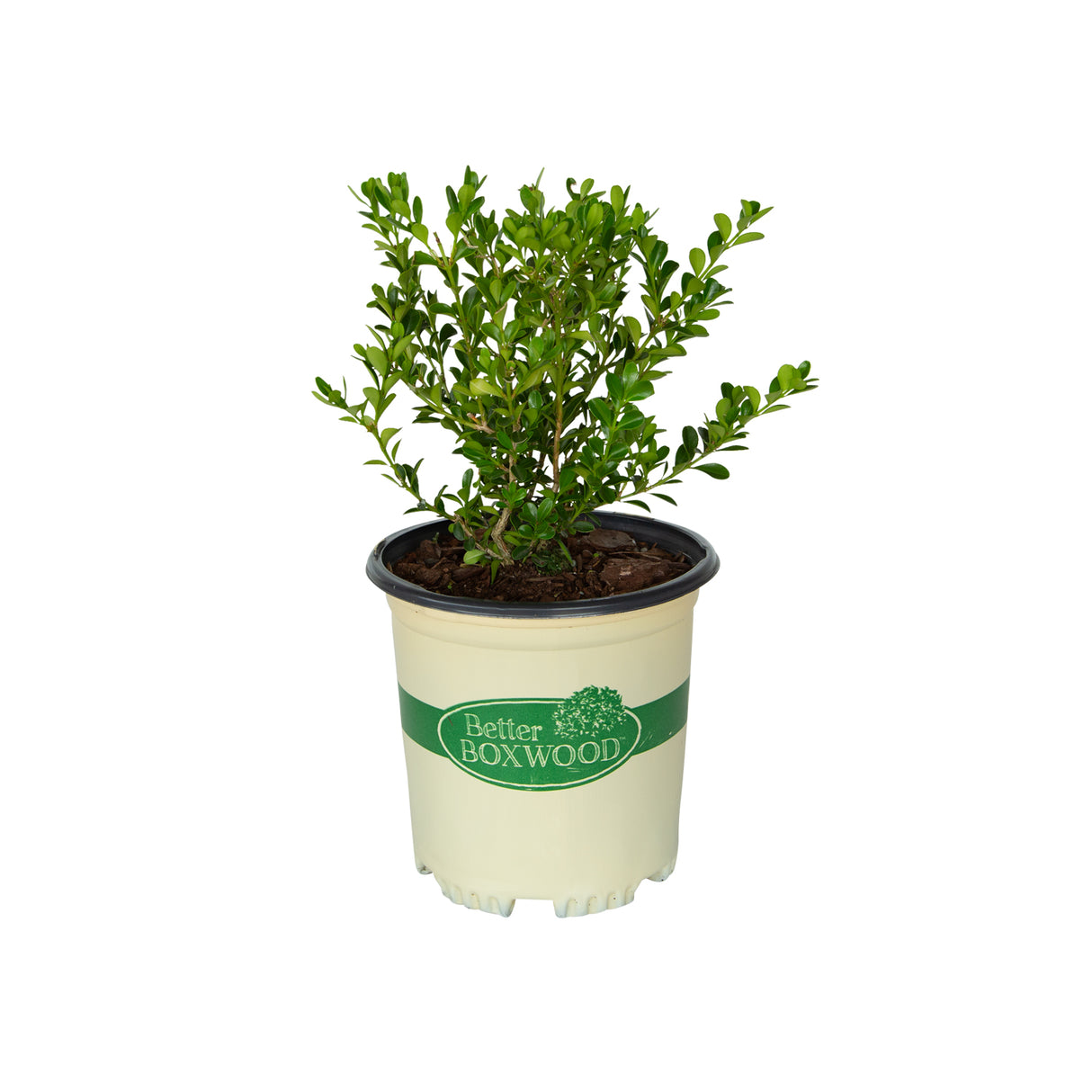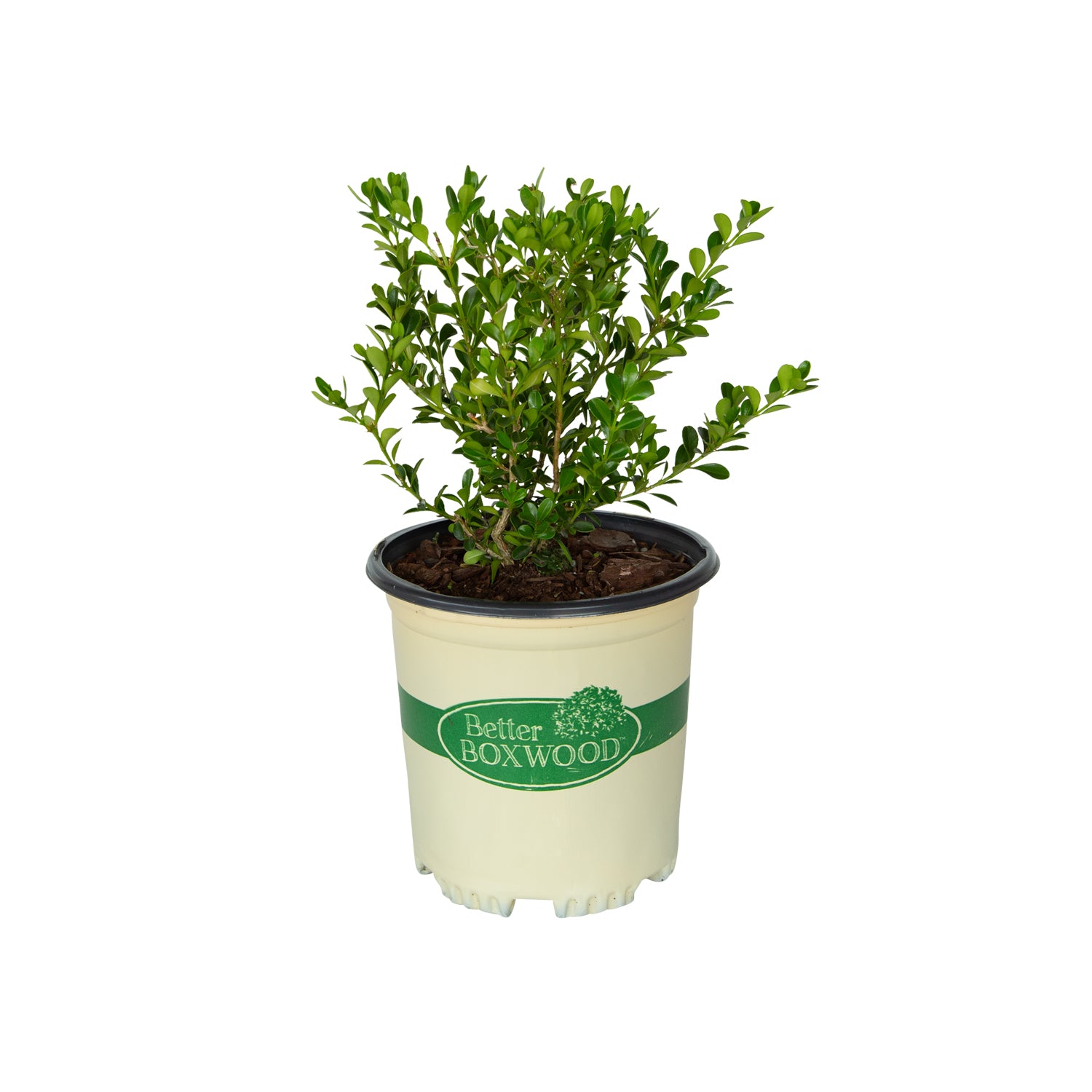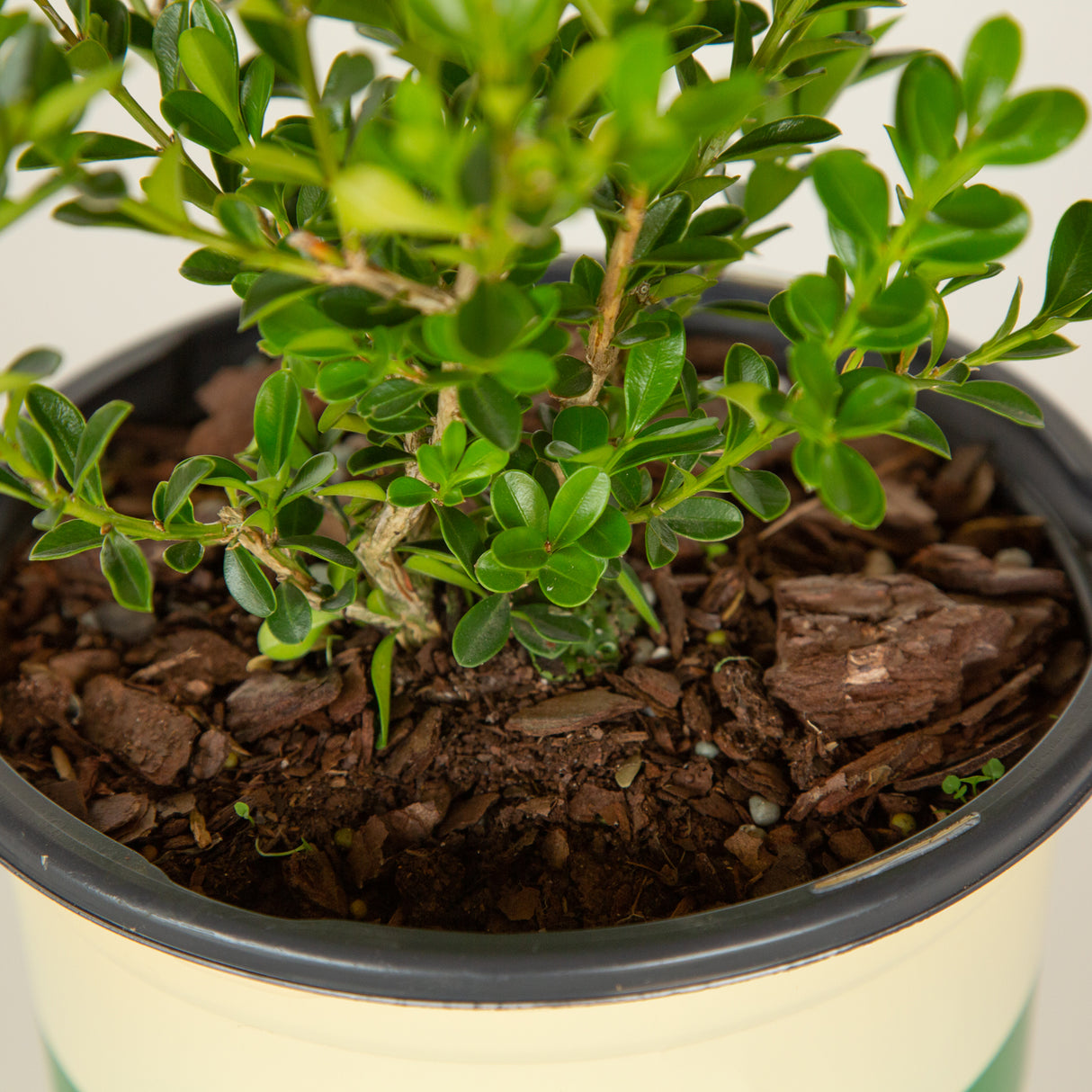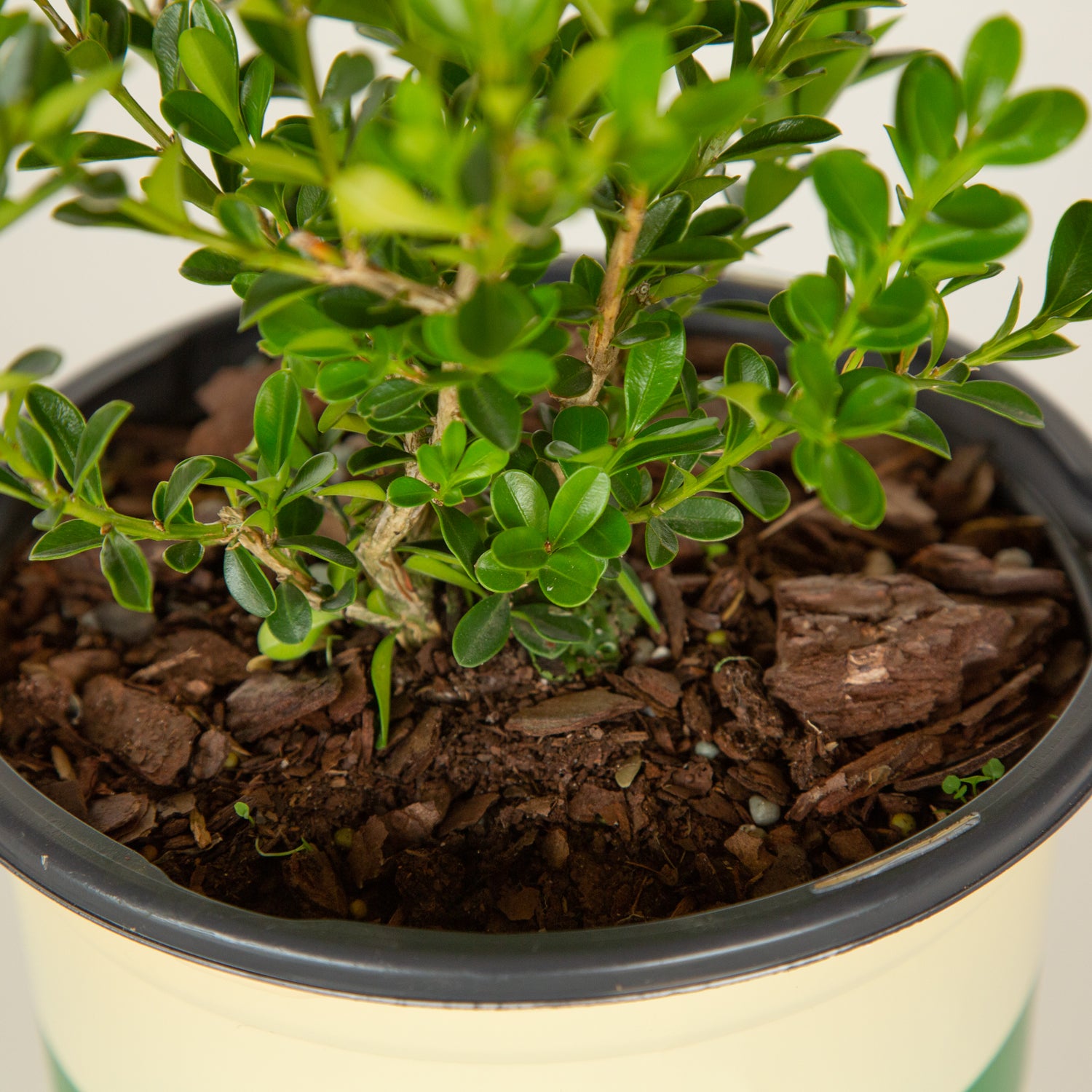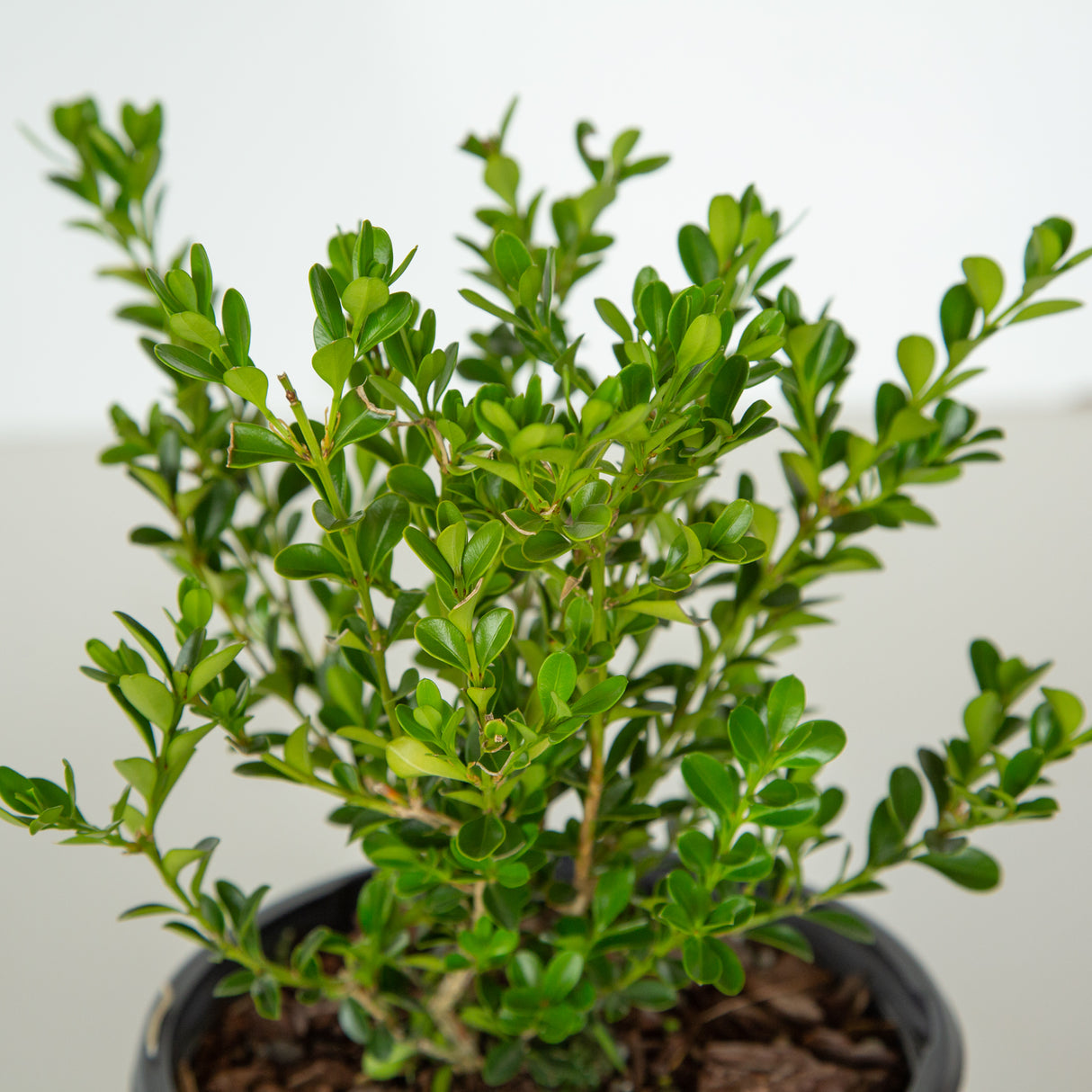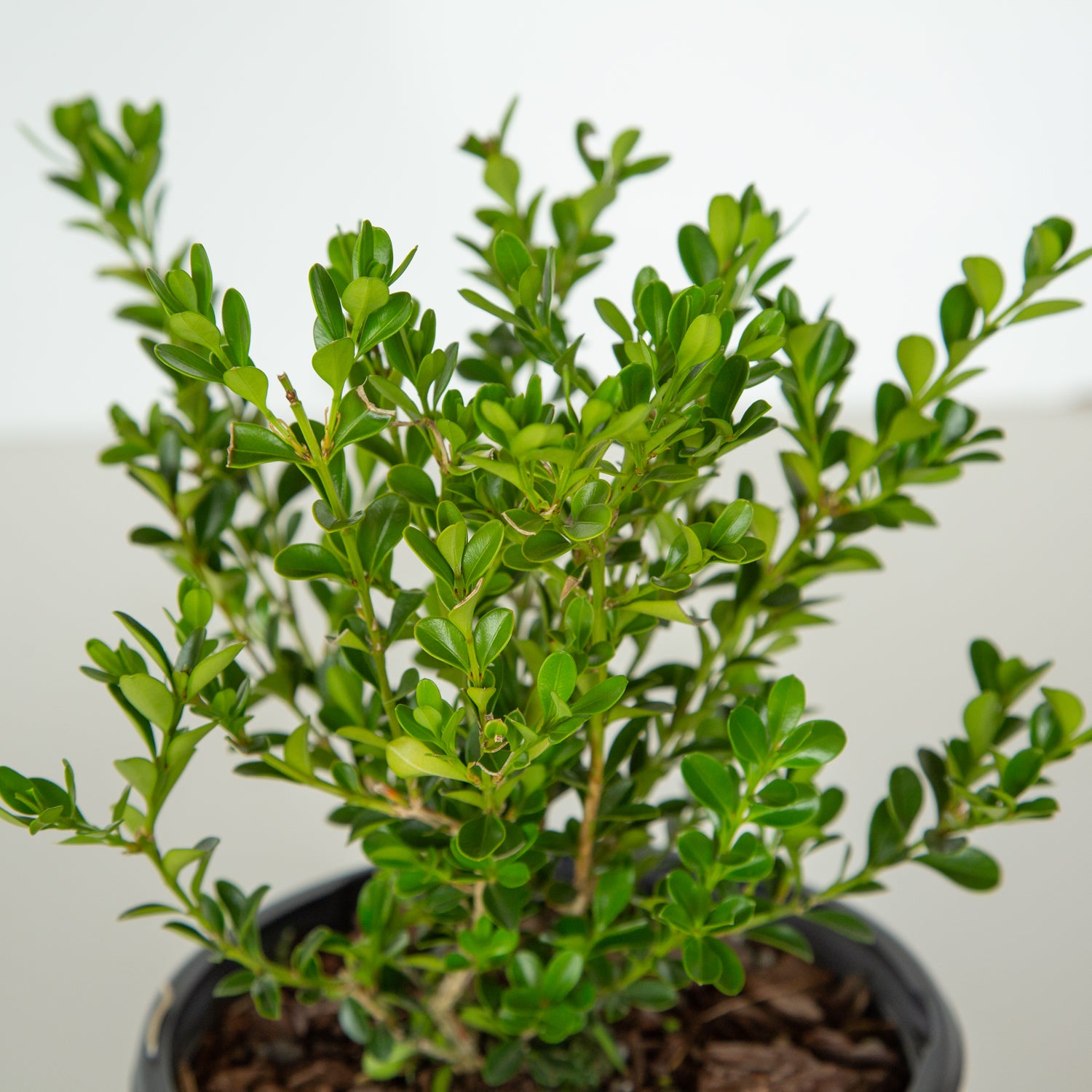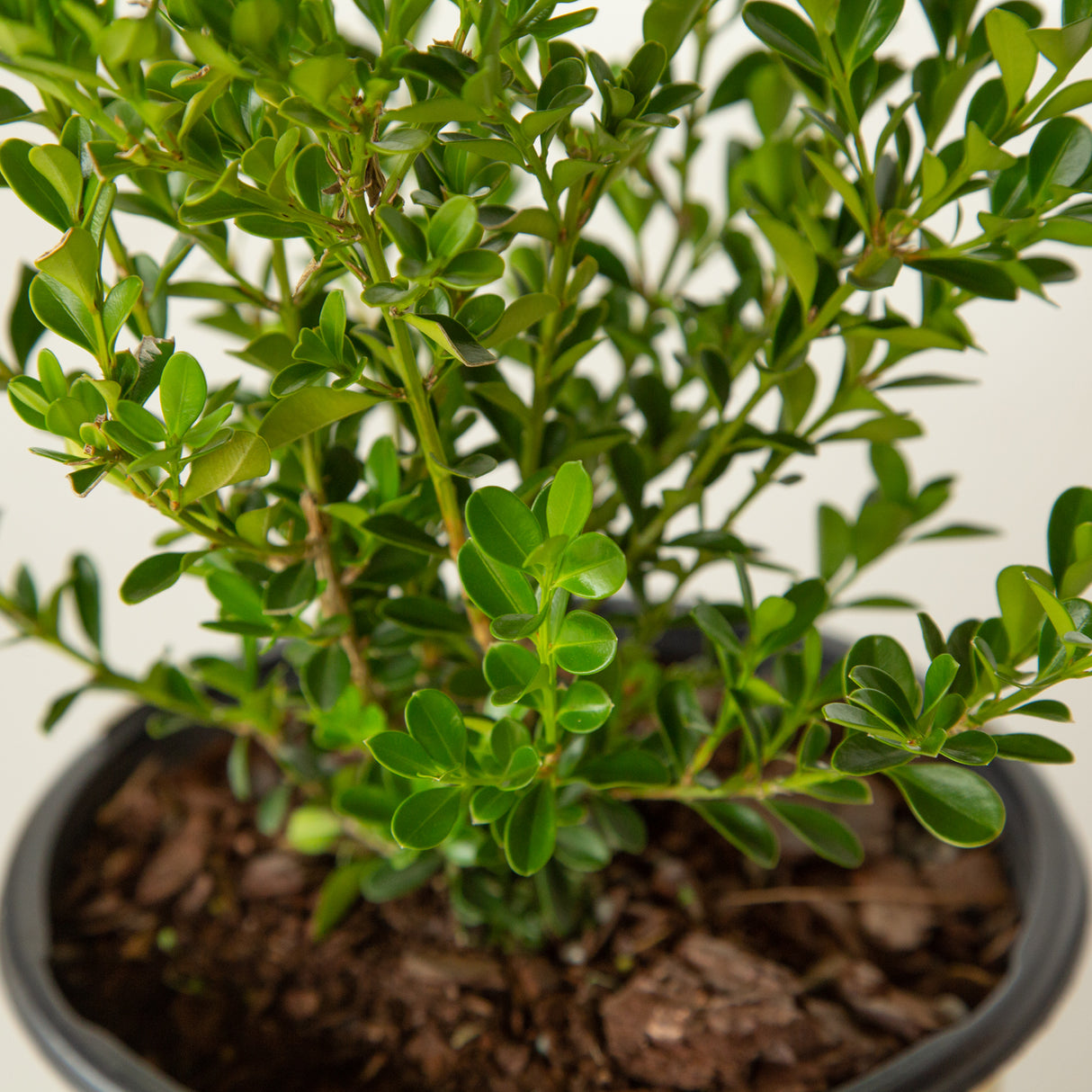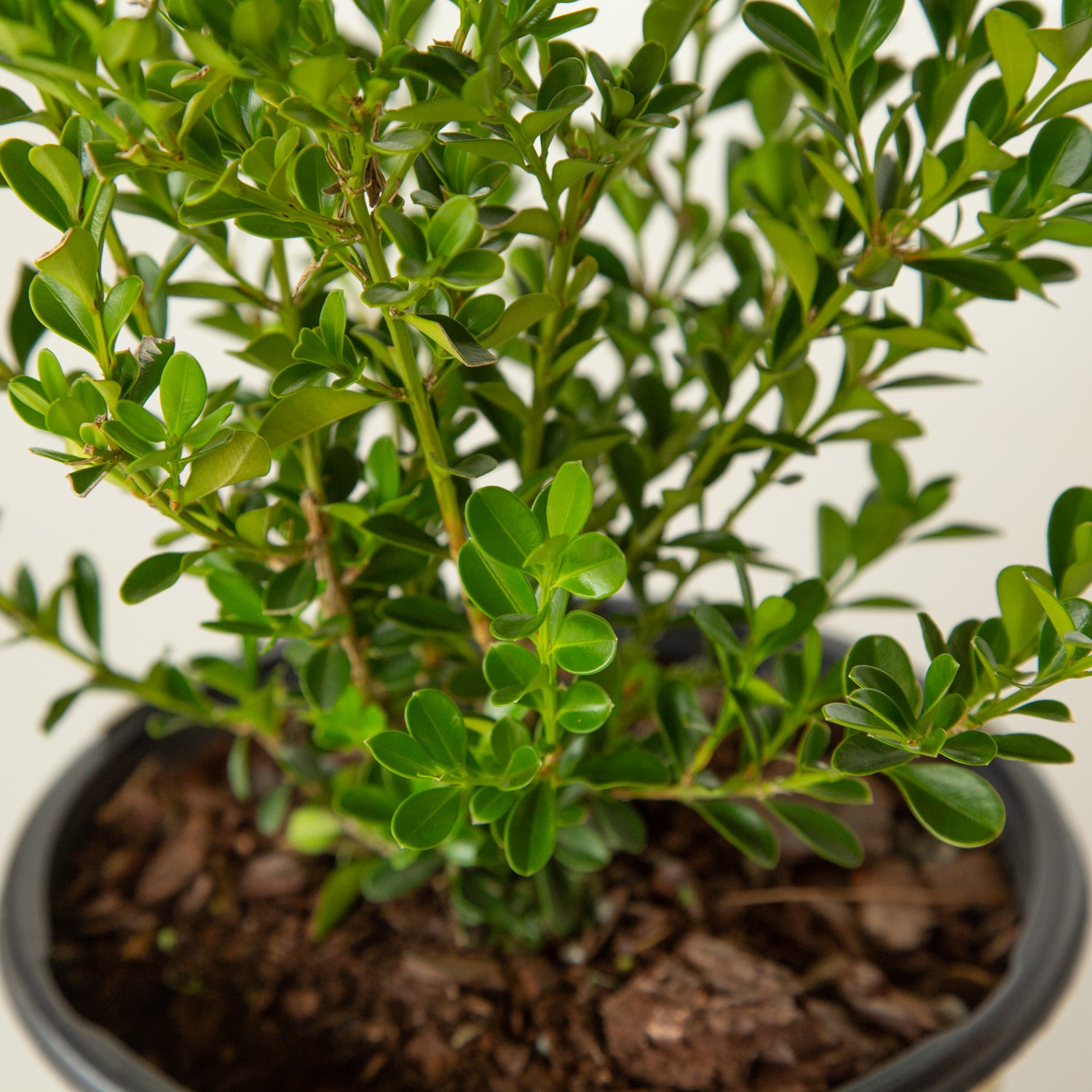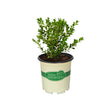Renaissance - Better Boxwood
Renaissance - Better Boxwood - 2.5 Quart is backordered and will ship as soon as it is back in stock.
Description
Description
Introducing the Better Boxwood Renaissance - the model of garden refinement and resilience. With over two decades of breeding and trials we are prepared to present to you the blight resistant, blight fighter line up! This particular cultivar has lighter green foliage similar to that of the Better Boxwood Babylon Beauty.
A fully-grown Renaissance stands tall at 1-2’ and spreads out to a width of 1-2’, presenting numerous potential applications and positioning options. Picture a pristine low hedge or an intricately shaped topiary, retaining its verdancy from winter's chill to summer's peak with minimal maintenance. That is the essence of what this Boxwood has to offer.
Gardening enthusiasts will appreciate the Renaissance adaptability. This is a good choice if you need an area covered as they are much more prone to spreading than other varieties. It’s especially useful for low-growing hedges, layering, and patio containers if they are well fed and watered. Its compact growth habit ensures a dense, lush appearance, making it perfect for both formal and casual garden settings as well.
Environmentally conscious gardeners can take solace in the fact that this cultivar is sustainably bred to resist the dreaded boxwood blight and other common pests. This means less reliance on chemical treatments, leading to a healthier garden ecosystem. Invest in the future of your garden with the Better Boxwood Babylon Beauty Boxwood – a symphony of beauty, resilience, and sustainability.
Better Boxwood - The Blight Fighter
This new cultivar of Boxwoods has been bred to be more resistant to boxwood blight which a devastating disease that affects traditional boxwoods. Boxwood blight is caused by the fungus Calonectria pseudonaviculata and can lead to rapid defoliation and death of the plants.
Although bred to be blight resistant, it's always a good idea to follow best practices for boxwood care to ensure the healthiest plants. This includes proper spacing for airflow, not watering the foliage directly, and regularly inspecting for any signs of disease or pests.
Better Boxwood Heritage Care
Better Boxwood Sunlight Requirements
The Renaissance Boxwood, like many Boxwood shrubs, prefers a location with full sun to partial shade. Ideally, it should receive between 4 to 6 hours of sunlight daily. In areas with intense summer heat, it is beneficial to provide some afternoon shade to protect it from scorching. This balance of sun and shade will help maintain the lush green color of its foliage and promote healthy growth.
When To Prune Better Boxwood Shrubs
The best time for major pruning or shaping is in late winter or early spring, just before the new growth begins. This allows you to remove any winter-damaged branches and shape the shrub for the upcoming season.
For light shaping or minor touch-ups, you can gently prune during the growth phase. However, refrain from extensive pruning in the late summer or autumn, as it can stimulate fresh growth that may not become resilient before the winter chill sets in.
Are Better Boxwoods Cold Hardy?
YES! The Renaissance Boxwood flourishes in numerous USDA hardiness zones, demonstrating its versatility and robustness in different weather conditions. It is especially well-suited for zones 5 to 9, showcasing its capacity to manage the temperature swings in these areas. Specifically, USDA Hardiness Zone 5 is characterized by a moderate climate where the average winter lows range from -20°F to -10°F.
How Often Do Boxwoods Need to Be Watered?
For optimal growth and health, the Heritage prefers well-draining soil, ensuring its roots are not left waterlogged and susceptible to rot. When it comes to watering, a consistent yet moderate routine is best, ensuring the soil remains moist but not overly saturated. The ideal soil type for this boxwood is a loamy blend that is rich in organic matter. Contrary to common perception, Boxwoods do NOT care for acidic soil. Plant in soil with a pH between 6.5-7.2.
Care & Use
Care & Use
Spacing Recommendations
Spacing Recommendations
-
Scientific Name
-
Hardiness Zone5, 6, 7, 8, 9
-
Sun ExposureFull Sun to Part Shade
-
Evergreen or DeciduousEvergreen
-
FeaturesDeer Resistant, Disease Tolerant, Heat Tolerant, Sun Loving
-
Feature ColorGreen
-
UsesAccent, Border, Container, Foundation Planting, Hedge, Mass Planting, Mixed Garden Bed
-
Water NeedsMedium
-
Bloom SeasonNone
Growing Zones : 5, 6, 7, 8, and 9
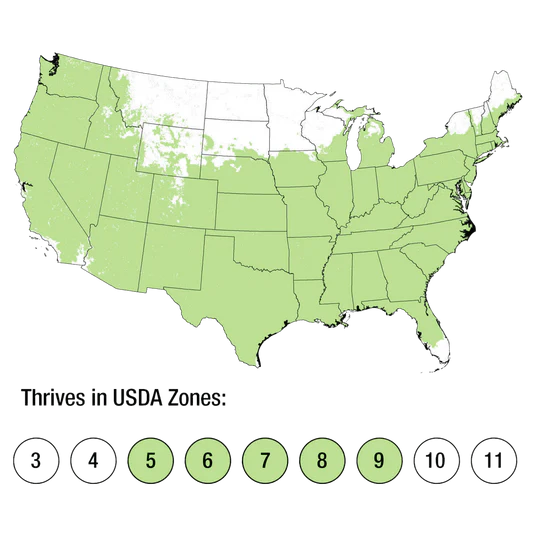

Better Boxwood
